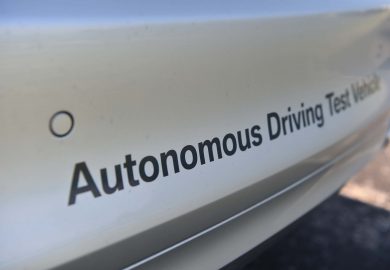On March 19, 2018, one of Uber’s self-driving cars on the roads of Tempe, Arizona, fatally struck a woman crossing the street while walking her bicycle. There was a driver behind the wheel, and Uber’s self-driving car automation system was controlling the vehicle. The artificial intelligence system failed to recognize that a human was crossing the road. Perhaps the dark lighting conditions, driver attentiveness, or flaws in the autopilot may have played roles. Since autonomous cars are believed to factor out the human error, this leads many people to question whether Uber was pushing its self-driving car technology too hard and too fast.
The Race to Be First in Autonomy
Uber is certainly not the only company testing autonomous cars, and that race to be the first to have the vehicles on the road and ready for commercial purposes could be a part of what is leading to some safety issues. Some of the companies competing with Uber to get self-driving cars on public roads include Apple, Baidu, Proterra, Waymo, Velodyne, and Samsung. Other companies also known to be testing autonomous cars include Mercedes-Benz, Delphi Automotive, Nissan, Audi, and Bosch. With so much national and international competition to bring self-driving cars to the marketplace, some companies might be testing technology on roads as quickly as they are able to create it.
Uber’s Safety History for Autonomous Cars
In March 2017, an Uber autonomously operated Volvo was involved in an accident. It was hit by another car, and the autonomous vehicle flipped onto its side. Even though the other driver was at fault for hitting Uber’s vehicle, the accident got a lot of attention about Uber’s safety record. While Uber has rushed to leverage technology for a fleet of self-driving taxis, other companies are taking a slower and more steady approach. Those companies, such as Waymo, already have a solid background in technology development, testing, and applications.
The Fatal Accident
In the police report and investigation of Uber’s March 19 fatal accident, it was dark outside. Self-driving cars are outfitted with laser sighting and high-speed sensors that should have been able to detect the form of a human even in low light. The police report indicated that no collision warning was initiated by the vehicle’s autopilot, and the brakes did not automatically engage. According to Dr. Steven Shladover, director of the Institute of Transportation Studies of the University of California at Berkeley, the technology should have been able to identify the person in the road and avoid the collision. This suggests that the artificial intelligence systems for self-driving cars still need some work.
Uber’s Suspension of Testing
Uber suspended testing of its fleet of autonomous cars in all states after the fatal accident. Arizona’s Governor Doug Ducey suspended the company’s right to test the vehicles in the state. However, other companies are still permitted to test their self-driving vehicles in the state. In particular, Waymo has plans to continue testing its autonomous cars and just ordered 20,000 Jaguars for its program. After the fatal accident, Toyota also suspended its testing of the SAE Level 5 chauffeur program, but not its semi-autonomous testing program.
The Future of Uber’s Autonomous Vehicles After the Fatality
The National Transportation Safety Board is investigating Uber’s fatal crash. Uber and its lidar supplier Nvidia are also investigating to pinpoint just went wrong on March 19. The data that the investigation reveals may help to improve Uber’s technology and the technology of other companies to prevent such circumstances from happening again. Ultimately, it is possible that this fatality could yield information that enhances the safety of autonomous vehicles.
Uber has test-driven its autonomous cars more than 2 million miles since 2016, and this is its first fatality. The total accident rate per million vehicle miles varies based on location, road conditions, age of driver, and number of years driving. The State of New York Department of Transportation estimates that for all types of accidents, the rate of fatal accidents in urban environments per million vehicle miles is 1.12.
This rate is for human drivers, and it is higher than Uber’s rate of one death for more than 2 million miles, which is about 0.5 per million vehicle miles. For Uber to get back on its testing plan, it will need to demonstrate that it has made changes to its autopilot and the human drivers who are behind the wheels of its self-driving vehicles. If the company can demonstrate that it is being proactive in making safety updates, it should be able to get back on track in the race to autonomy.























